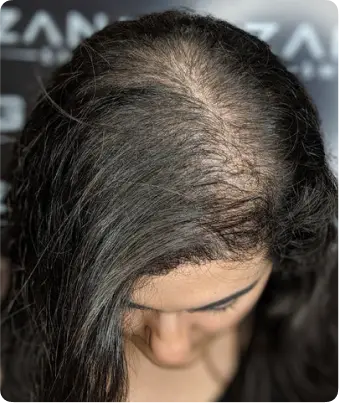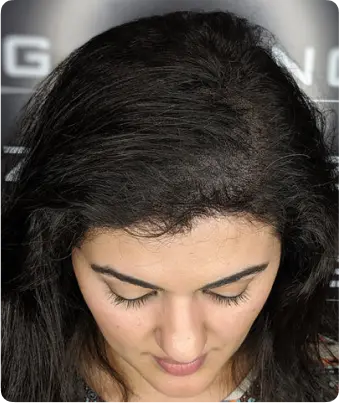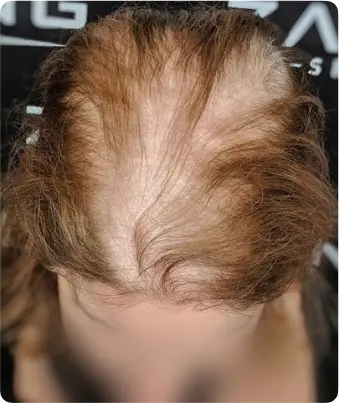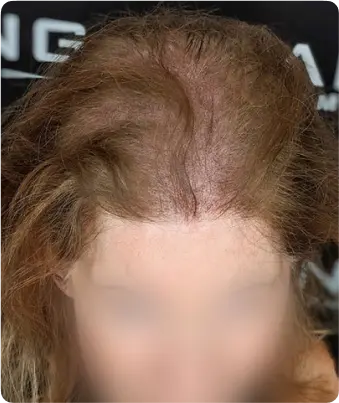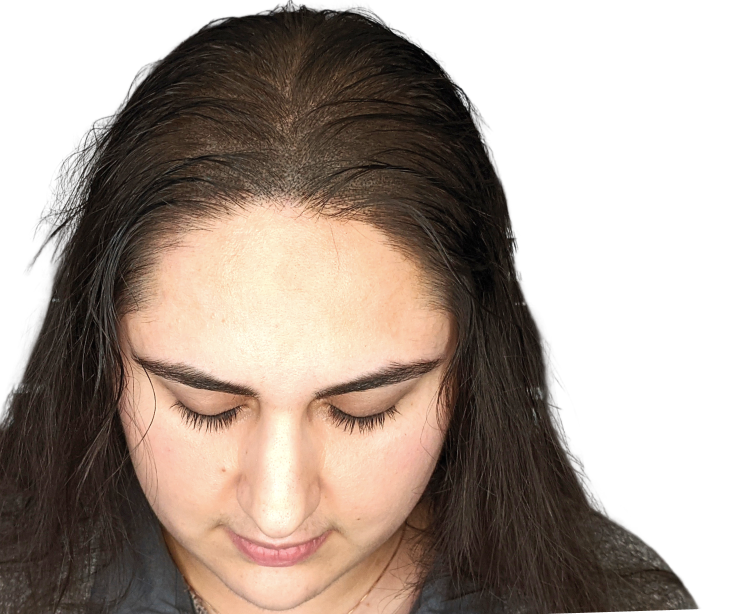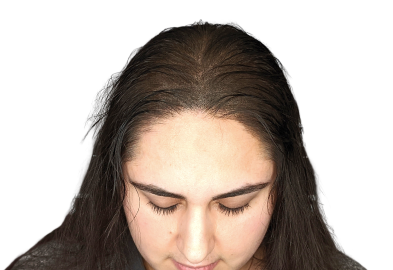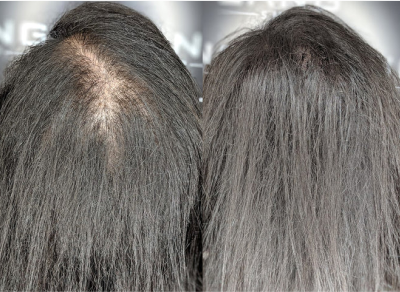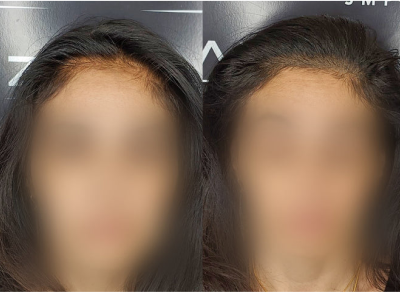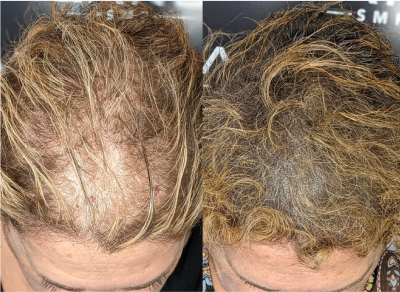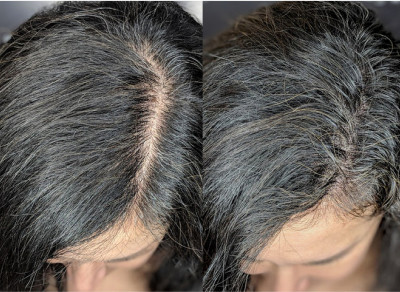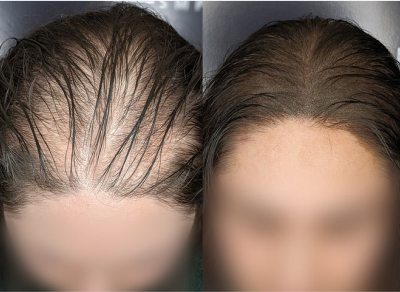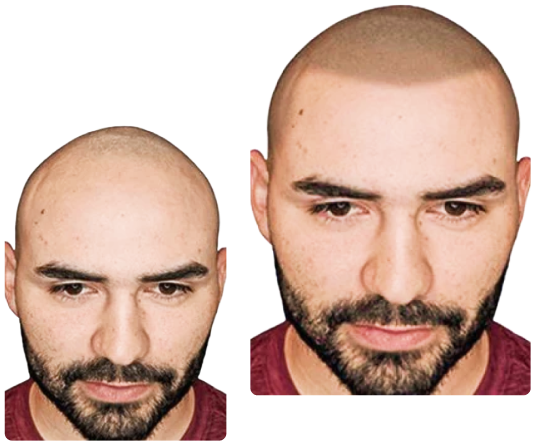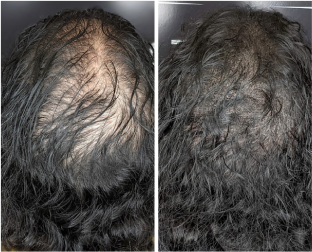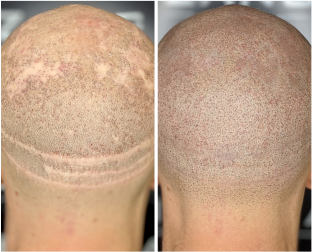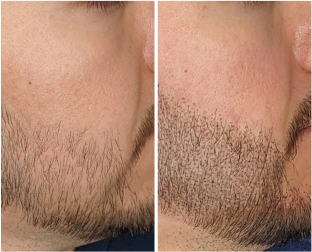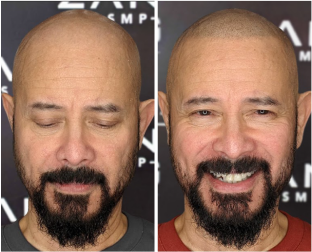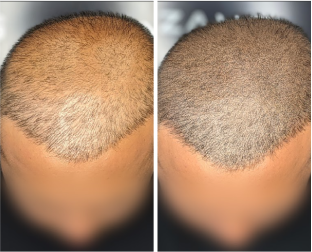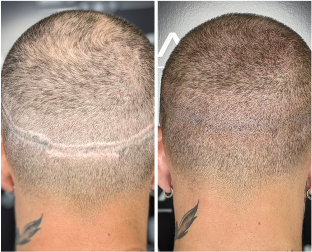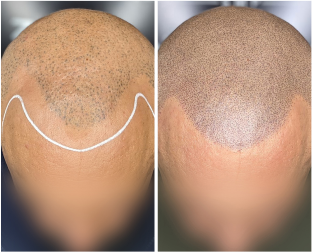Stages of Female Hair Loss
Female pattern hair loss is measured using the Ludwig scale. Stage 1 marks the early phase, where scalp exposure is visible at the part line.
In Stage 2, thinning becomes more concentrated in the central area. Stage 3 involves significant thinning across the scalp. Another concern is traction alopecia, caused by tight hairstyles like braids, leading to permanent hair loss along the edges.
Treatment For Female Pattern Hair Loss: Scalp Micropigmentation
For women facing hair loss, Scalp Micropigmentation (SMP) offers a breakthrough non-surgical treatment. It uses plant-based, organic pigments to replicate hair follicles on the scalp, creating immediate results with no recovery needed.
At Zang SMP, we utilize pigments that are indistinguishable from real hair follicles, providing an enhanced, natural appearance without the risks of surgery or transplants. SMP effectively conceals balding areas, giving the illusion of thicker, fuller hair.
The treatment typically spans two to three sessions. The first two occur one week apart, addressing female-specific hair loss concerns. If necessary, a final session is scheduled one to three months later to perfect the appearance.
Would a Hair Transplant Treat Hair Loss?
Hair transplants may not be the right solution for many cases of female and male pattern hair loss. These procedures require donor grafts, which are difficult to use if hair thinning affects the entire scalp.
Even worse, placing grafts in areas with existing hair can damage native follicles. This unexpected damage could leave you with even thinner hair than before.
Scalp micropigmentation (SMP) provides a safe, highly effective alternative. It restores the look of thicker hair instantly, without surgery or harm to your existing follicles. With no recovery time required, the results are immediate and lasting.
At Zang SMP, we take pride in our expertise and results. Our talented team delivers natural-looking transformations that help you look and feel your best.

